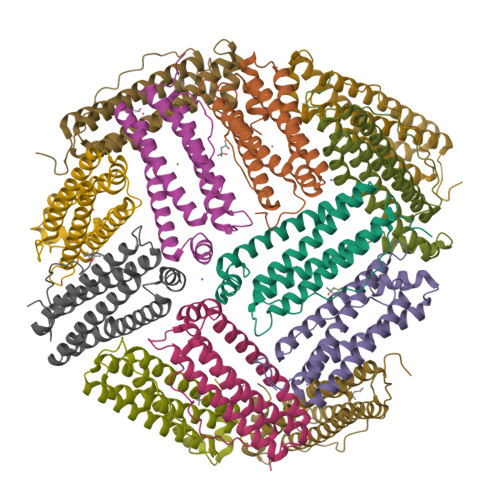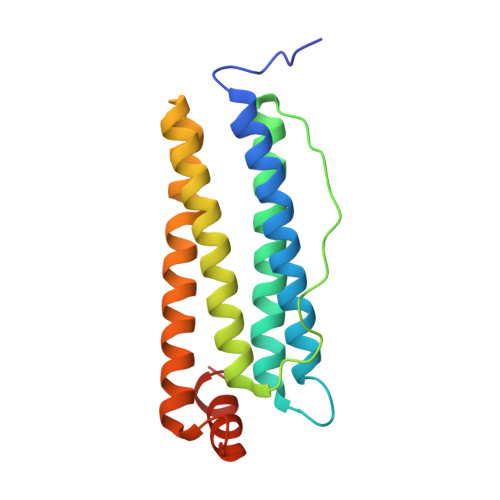Anisotropic Dynamics and Mechanics of Macromolecular Crystals Containing Lattice-Patterned Polymer Networks.
Han, K., Bailey, J.B., Zhang, L., Tezcan, F.A.(2020) J Am Chem Soc 142: 19402-19410
- PubMed: 33124805
- DOI: https://doi.org/10.1021/jacs.0c10065
- Primary Citation of Related Structures:
6WYF, 6WYG, 6WYH, 7K26 - PubMed Abstract:
The mechanical and functional properties of many crystalline materials depend on cooperative changes in lattice arrangements in response to external perturbations. However, the flexibility and adaptiveness of crystalline materials are limited. Additionally, the bottom-up, molecular-level design of crystals with desired dynamic and mechanical properties at the macroscopic level remains a considerable challenge. To address these challenges, we had previously integrated mesoporous, cubic ferritin crystals with hydrogel networks, resulting in hybrid materials (polymer-integrated crystals or PIX) which could undergo dramatic structural changes while maintaining crystalline periodicity and display efficient self-healing. The dynamics and mechanics of these ferritin-PIX were devoid of directionality, which is an important attribute of many molecular and macroscopic materials/devices. In this study, we report that such directionality can be achieved through the use of ferritin crystals with anisotropic symmetries (rhombohedral or trigonal), which enable the templated formation of patterned hydrogel networks in crystallo. The resulting PIX expand and contract anisotropically without losing crystallinity, undergo prompt bending motions in response to stimuli, and self-heal efficiently, capturing some of the essential features of sophisticated biological devices like skeletal muscles.
Organizational Affiliation:
Department of Chemistry and Biochemistry, University of California, San Diego, La Jolla, California 92093, United States.



















